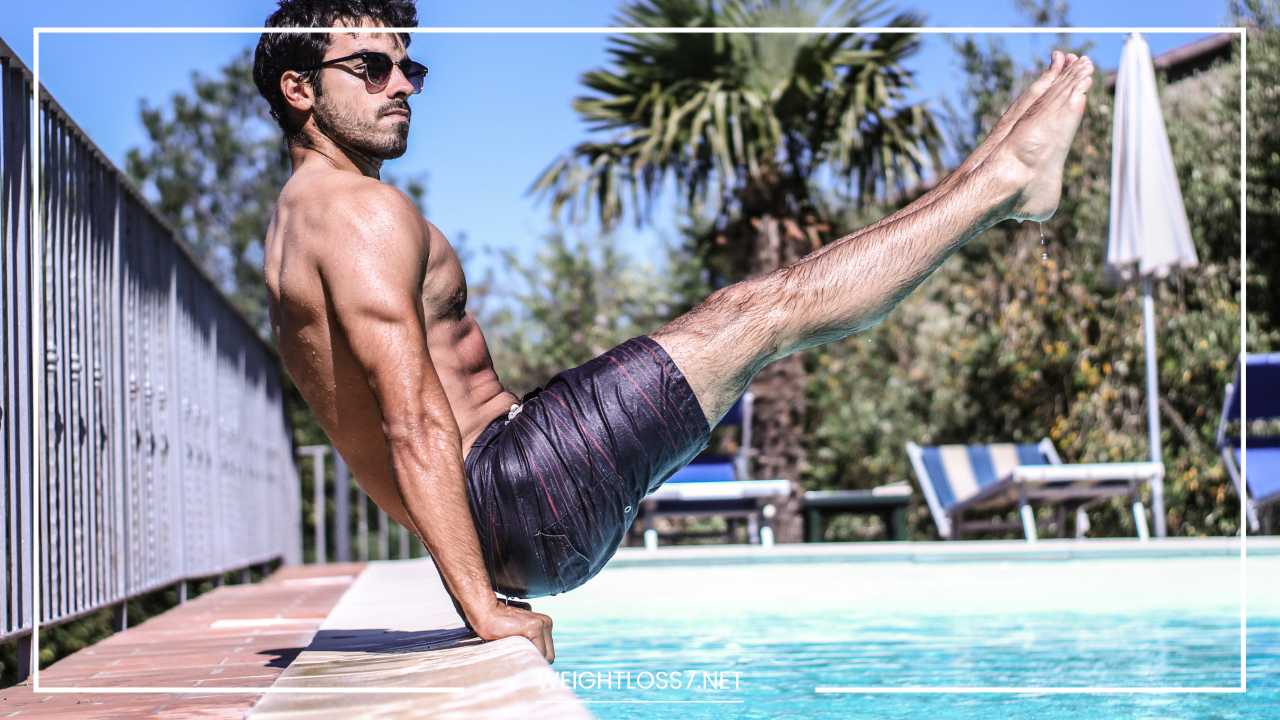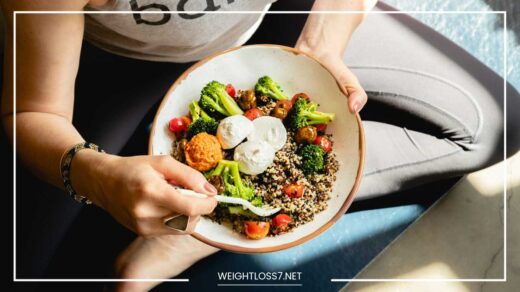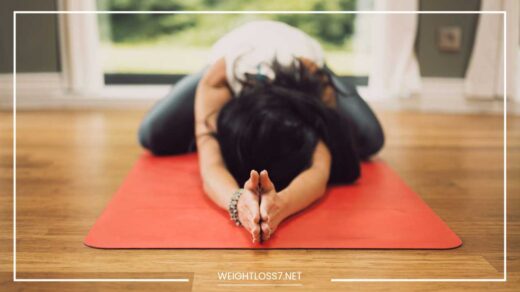Pool Workout for Weight Loss

Pool Workout for Weight Loss
Dive into Fitness: A Pool Workout for Weight Loss, Toning, and Endurance
Swimming and water aerobics are two of the most effective, low-impact forms of exercise you can do to get in shape, lose weight, and improve your overall health.
Whether you’re a beginner or an experienced athlete, the resistance of water makes each movement more challenging, allowing you to burn more calories and strengthen muscles.
The buoyancy of water also reduces the impact on joints, making it a great option for those with joint pain or mobility issues.
Whether you’re looking to shed pounds, increase muscle tone, or boost cardiovascular fitness, a pool workout routine can help you reach your goals.
In this comprehensive guide, we will provide you with a detailed pool workout routine designed to burn calories, tone your body, and improve your overall fitness.
This program can be easily modified based on your skill level and fitness goals, and it combines a mix of swimming, water aerobics, and resistance exercises to engage every major muscle group.
By the end of this routine, you’ll be feeling stronger, more energized, and motivated to continue your fitness journey.
Why Pool Workouts?
Before diving into the workout itself, let’s take a moment to understand why pool-based exercise is so effective.
- Low-Impact Exercise: The water’s buoyancy supports your body, which minimizes stress on your joints, making water workouts ideal for people with arthritis, injuries, or chronic pain. This reduces the risk of overuse injuries that are common with land-based exercise.
- Full-Body Workout: Water resistance activates almost every muscle group in your body. Every stroke, kick, or movement in the pool requires your core, arms, and legs to engage, offering a more comprehensive workout compared to other forms of exercise.
- Increased Calorie Burn: Water provides 12 times the resistance of air, meaning even a slow movement in the water can burn more calories than performing the same action on land. In fact, an hour of swimming can burn up to 500-700 calories, depending on your intensity.
- Improved Flexibility and Mobility: The water allows for a greater range of motion in many movements, which helps improve flexibility and mobility over time. This can be especially beneficial for older adults or those looking to increase their mobility without the risk of injury.
- Cardiovascular Benefits: Swimming and water aerobics are great for cardiovascular health. Whether you swim laps or do water aerobics, both activities elevate your heart rate, improving heart health and endurance.
- Stress Reduction and Mental Health: Swimming is known to reduce stress levels, improve mood, and promote better sleep. The soothing nature of water can provide a meditative experience that not only benefits your body but also your mind.
With all of these benefits, it’s clear why incorporating pool-based exercises into your routine is a smart choice. Let’s dive in!
Warm-Up (5-10 Minutes)
A proper warm-up is crucial for preventing injury and preparing your body for more intense activity. When you are in the water, warming up also helps to acclimatize your body to the temperature of the pool. Here’s how to get started:
1. Light Jogging in the Shallow End (2-3 Minutes)
Start in the shallow end of the pool where the water reaches your waist. Jog at a slow pace to gradually elevate your heart rate and activate your muscles.
Focus on keeping a steady pace, swinging your arms as you jog to warm up your upper body as well. If you’re new to pool workouts, this may be enough to get your blood flowing.
2. Arm Circles (1-2 Minutes)
Stand in chest-deep water with your arms extended to the sides. Rotate your arms in large circles in both directions (forward and backward) for 30 seconds in each direction.
This warms up your shoulder joints, upper arms, and upper back. The water’s resistance helps activate these muscles more effectively than on land.
3. Leg Swings (1-2 Minutes)
Hold onto the pool’s edge for balance and swing one leg forward and backward, aiming to increase the range of motion as you go.
Perform this movement for about 30 seconds per leg. This exercise loosens up the hips, hamstrings, and quadriceps and improves your flexibility and balance.
4. Torso Twists (1-2 Minutes)
With your feet planted in the pool, hold your arms out in front of you or place them on your hips. Slowly twist your torso to the left and right, focusing on engaging your core muscles.
This dynamic stretch warms up the lower back, spine, and abdominal muscles.
Main Workout (30-45 Minutes)
The main portion of the workout consists of a combination of water aerobics, swimming intervals, and water resistance exercises. These exercises target various muscle groups and focus on both fat loss and toning.
Water Aerobics (10-15 Minutes)
Water aerobics is a great way to increase your heart rate, burn calories, and activate large muscle groups. Because of the water’s resistance, these exercises are more challenging than similar movements on land.
- Jumping Jacks (2-3 Minutes)
In chest-deep water, perform jumping jacks by jumping your legs outward while raising your arms above your head. This exercise targets your cardiovascular system, engages your legs, arms, and core, and provides an excellent calorie-burning boost. Focus on form—engage your core as you jump to maximize the benefits. - High Knees (2-3 Minutes)
Run in place, bringing your knees up toward your chest as high as possible. Keep your core engaged and your back straight. Running in the water reduces impact on your joints while still providing an excellent workout for your thighs, calves, and abs. For an added challenge, try to increase the speed or alternate between fast and slow intervals. - Butt Kicks (2-3 Minutes)
While running in place, kick your heels toward your glutes. This exercise targets the hamstrings and glutes while keeping your heart rate elevated. Try to keep your arms moving as well to increase intensity. - Side-to-Side Shuffle (2-3 Minutes)
With your knees slightly bent, shuffle side-to-side in the shallow end of the pool. This lateral movement engages the hips, thighs, and calves. Try to keep a steady rhythm and focus on maintaining a low, squat-like stance to challenge your lower body. - Arm Circles (Continued) (1-2 Minutes)
Continue rotating your arms in large circles (forward and backward) to keep your shoulders and upper arms engaged. Try to make the circles as large as possible to maximize resistance and increase the challenge.
Swimming Intervals (15-20 Minutes)
Swimming intervals are one of the most effective ways to improve cardiovascular fitness and burn fat.
This interval-based structure will allow you to alternate between high-intensity swimming and recovery periods, helping you improve endurance and increase calorie burn.
- Freestyle (Front Crawl) Intervals (4-6 Sets)
Swim freestyle for 30 seconds at a moderate pace, then rest for 30 seconds. Repeat this cycle for 4-6 rounds. The front crawl engages your shoulders, arms, core, and legs, offering a full-body workout that builds strength and endurance. - Backstroke Intervals (4-6 Sets)
Swim the backstroke for 30 seconds, then rest for 30 seconds. Repeat this cycle for 4-6 rounds. The backstroke primarily works the back, shoulders, and legs. It’s also an excellent option if you’re looking to work your muscles in a different way than the freestyle. - Breaststroke Intervals (4-6 Sets)
Swim the breaststroke for 30 seconds, then rest for 30 seconds. Repeat this for 4-6 rounds. The breaststroke is a slower stroke that targets the chest, shoulders, and legs, and is a great option for building endurance and increasing muscle tone. - Butterfly Intervals (Optional) (3-4 Sets)
If you’re comfortable with the butterfly stroke, swim for 30 seconds and rest for 30 seconds. Repeat this for 3-4 rounds. The butterfly works the chest, shoulders, arms, and core. Because of its intensity, it burns a significant amount of calories and helps improve upper body strength.
Water Resistance Exercises (10-15 Minutes)
Water resistance exercises help build strength and tone muscles while increasing the difficulty of your workout. The natural resistance of water makes these exercises both effective and gentle on the joints.
- Water Push-ups (2-3 Sets)
Face the pool wall, place your hands shoulder-width apart, and perform push-ups in the water. Keep your body straight, engaging your core as you push your body up and down. The water’s resistance intensifies the movement, working the chest, triceps, and shoulders. - Water Squats (2-3 Sets of 10-15 Reps)
Stand in chest-deep water with your feet shoulder-width apart. Lower yourself into a squat position, keeping your back straight and your knees aligned with your toes. Push through your heels to return to standing. Squats in water are excellent for strengthening the thighs, glutes, and core while providing resistance in every movement. - Water Lunges (2-3 Sets of 10-15 Reps Per Leg)
Stand in chest-deep water and take a step forward into a lunge position. Keep your knee behind your toes and your core engaged as you lower your body. Push off from your front foot to return to the starting position. Water lunges strengthen the quads, hamstrings, glutes, and core. - Water Bicycle Crunches (2-3 Sets of 10-15 Reps Per Side)
Float on your back in deep water and perform bicycle crunches by alternating bringing your opposite elbow and knee together. This targets your obliques, abs, and hip flexors, giving your core a thorough workout. - Water Plank (2-3 Sets of 30 Seconds)
In deep water, hold a plank position with your arms and legs extended. Engage your core and try to maintain a straight body from head to heels. The water’s resistance makes it more challenging than on land, intensifying the workout for your core, shoulders, and legs.
Cool-Down (5-10 Minutes)
A cool-down is important to allow your heart rate to gradually decrease and to prevent muscle tightness.
1. Light Jogging or Walking (2-3 Minutes)
Gradually slow your pace as you jog or walk in the shallow end of the pool. This helps to lower your heart rate safely.
2. Stretching (3-5 Minutes)
Stretch in the water to relax and lengthen your muscles after the workout. Focus on major muscle groups, such as your hamstrings, quadriceps, shoulders, and back. Gentle stretching can improve flexibility and help prevent soreness.
- Hamstring Stretch: Extend one leg straight out in front of you and gently lean forward to stretch the back of your leg. Hold for 15-20 seconds per leg.
- Quad Stretch: Grab your ankle behind you and pull it toward your glutes to stretch your quadriceps. Hold for 15-20 seconds per leg.
- Shoulder Stretch: Extend one arm across your body and gently pull it closer with the other hand to stretch your shoulder.
Final Thoughts and Tips
- Hydration: Despite being in the water, it’s easy to forget to hydrate during pool workouts. Be sure to drink water before, during, and after your workout to stay properly hydrated.
- Proper Swimwear: A well-fitting swimsuit is key to comfort during your workout. A swimsuit with support will allow you to move freely without distractions.
- Consistency is Key: Consistency is one of the most important factors when it comes to weight loss and toning. Try to incorporate this workout into your routine 2-3 times a week for best results.
- Consult a Doctor: If you have any pre-existing health conditions or concerns, always consult a doctor before starting any new fitness program.
By following this pool workout routine, you can expect to see improvements in your cardiovascular fitness, strength, flexibility, and overall health.
Plus, the fun nature of working out in the water makes it a sustainable, enjoyable activity you can stick with long term.

















